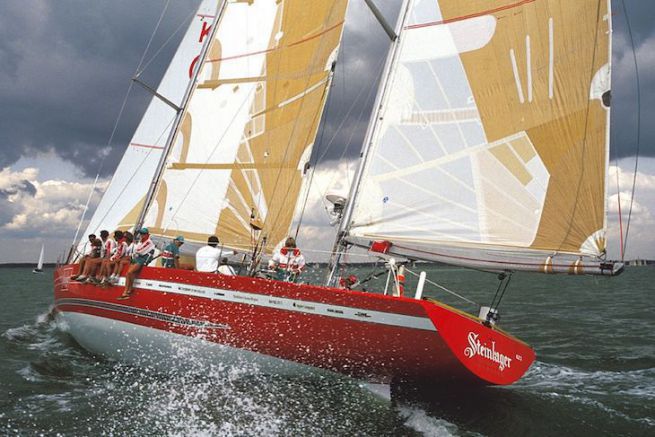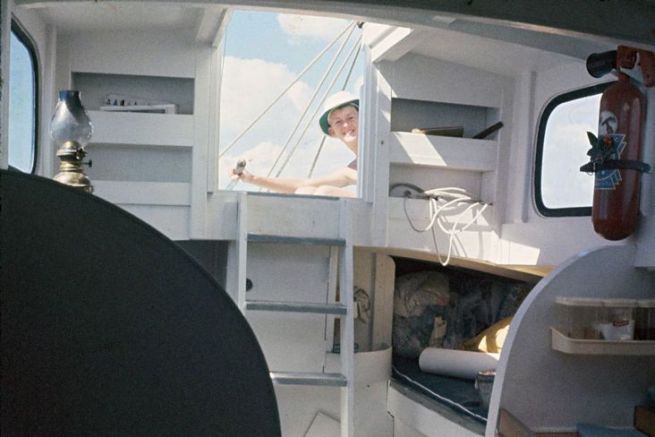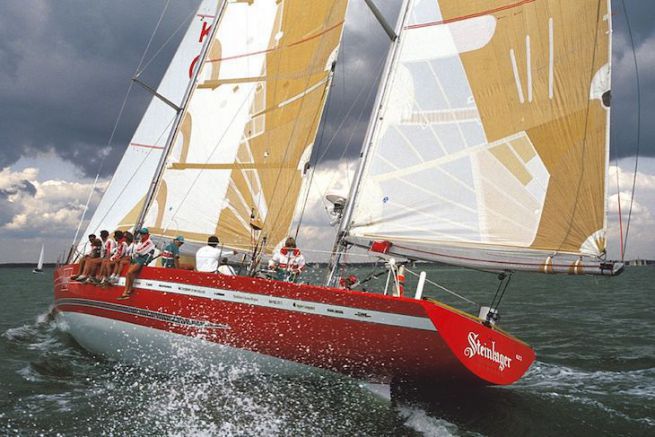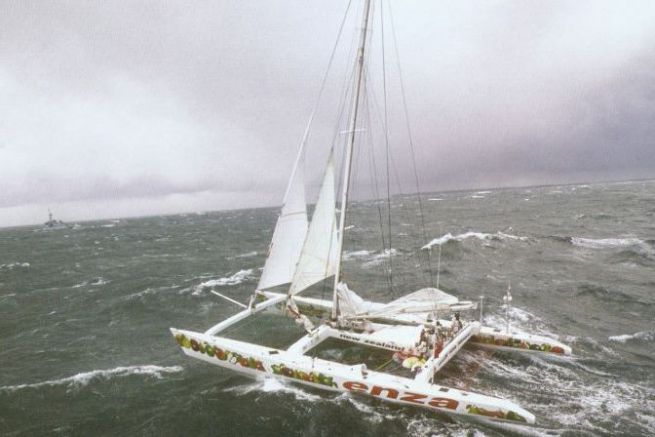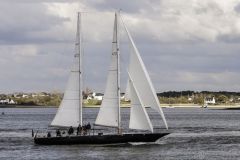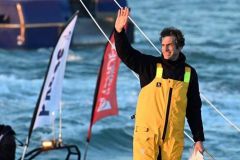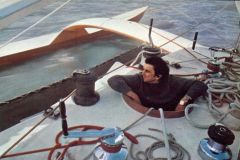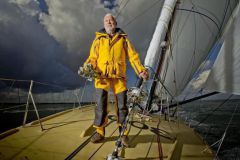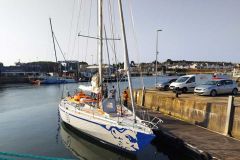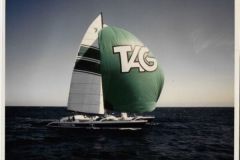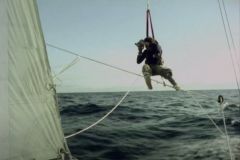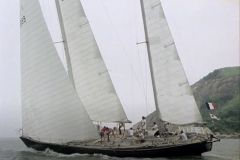1973 - 1974, a first major failure
After his victory in the New Zealand Junior Offshore Group (JOG) championship in 1967-68 on Bandit, the sailboat he built for himself in the family garden, he dreamed of seeing the world. He sells his boat and buys himself a plane ticket to England. He then gravitated into the world of sailing and sailed as a crew member on many boats.
In 1971, he won the first race from Cape Town to Rio de Janeiro. He was then shift supervisor on Ocean Spirit. He thus gained a place on the first crewed round the world voyage with a stopover, the Whitbread. He is a crew member on Leslie Williams' sailboat Burton Cutter. This experiment will be a real failure.
The boat is poorly prepared - there are no bunkers, the helmsman's seat is a box of beer, which will take water quickly, the toilets are not installed properly and untreated sewage flows into the bottom, it rains in the cabins - and suffers severe structural damage during the southern leg to Sydney.
Blake calls this bad experience a "learning period" and probably owes his taste for planning and attention to detail to him.
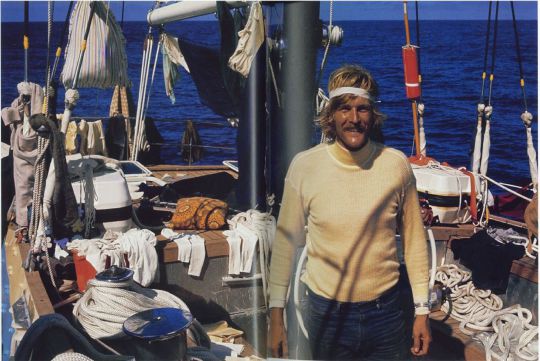
1977-1978, a second edition still poorly prepared
Between these two Whitbreads, Peter Blake won several victories: the Round Britain Race in 1974 with Robin Knox-Johnston or the first Round North Island (New Zealand) in 1977.
For his second round-the-world trip in 1977, Peter was watch leader on the magnificent Maxi yacht, Condor of Bermuda. Skippered jointly by Leslie Williams and Robin Knox Johnston, the 24m sloop was designed by John Sharp (who had already designed Burton Cutter). Its moulded wooden hull supports a mast made of carbon fibre, which makes it a real pioneer.
If the boat looks better finished than its predecessor, it is only an illusion. The lack of preparation will be fatal to him since the carbon rigging is unusable from the first stage. Despite his victories in the 2nd and 4th rounds and a 2nd place on the 3rd stage, Condor finished last in the race.
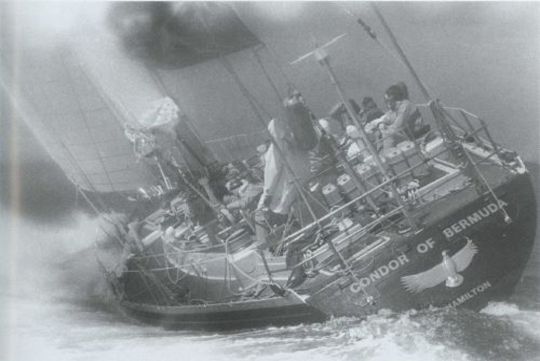
1981 - 1982: a third test and dismasting
After the second Whitbread, Blake spent much of the summer of 1978 helping to renovate Condor, in the picturesque village of Emsworth on England's south coast. There he met his future wife - Pippa Glanville - a student at the Beaux-Arts in London, whom he married in England in 1979.
They will spend part of their honeymoon convoying Condor to Australia, where Peter, who became the boat's official skipper, is participating in the Sydney Hobart. He won many races that same year: the Miami to Montego Bay Race, the Antigua to Bermuda Race (and set a new record) as well as the famous Fastnet Race and its black edition, in which 19 sailors died and 20 boats were sunk.
With New Zealand now an integral part of the "sailing" homelands, two New Zealand teams are competing in the third Whitbread. Outward Bound is a 50-foot boat designed by Laurie Davidson and skippered by Digby Taylor. Ceramco New Zealand, is a 30 metre sloop designed by Bruce Farr and skippered by Peter Blake. He won the Sydney-Hobart in 1980.
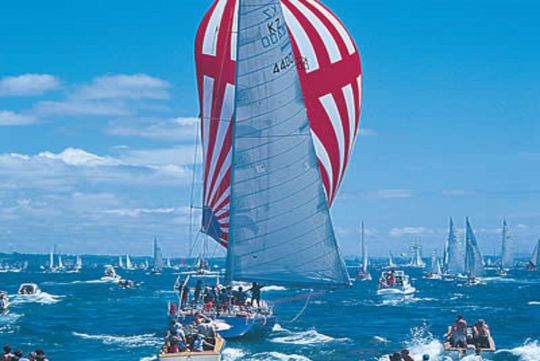
The boat left Portsmouth in 1981, as a serious candidate for victory. But 23 days after the departure, it was a disaster. Ceramco New Zealand dismasts and Blake's dreams of victory collapse. At the end of the first leg, the sailboat is still 2,500 miles from Cape Town. The navigator and his crew then have two choices:
- Head towards the island of Ascension and reach South Africa by motor, abandoning the first stage
- Sail downwind towards Cape Town, extending from 1,000 to 1,500 miles.
For the determined sailor, the first choice is unthinkable. Ceramco thus crossed the finish line of the first stage under jury rig, one of the most significant achievements in the history of sailing.
Back in Cape Town, Ceramco continues on its way with a sixth place finish on stage 2 and notable victories on the Auckland and Portsmouth stages. Ceramco finished the Whitbread in 11th place.
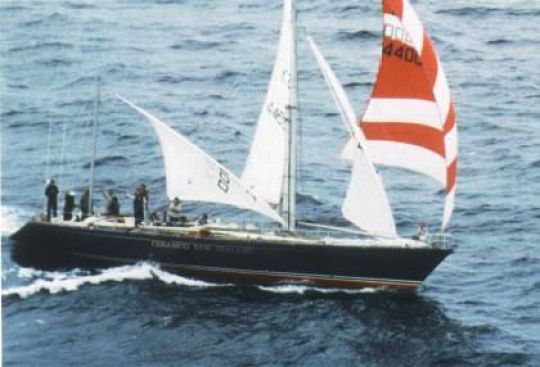
1985-1986: a boat too heavy
His arrival under jury rigging during the first stage of the 1981 Whitbread attracted public support. Blake is now recognized. At the end of his first round the world voyage, he said he was "never again" disappointed with the result and uncertain about the financial stability of his job as skipper, so he is now embarking on a fourth campaign.
Determined to have a maxi yacht of the latest generation, he has a budget of 3 million New Zealand dollars (Ceramco had cost $600,000). Lion New Zealand is a sloop designed by Ron Holland nicknamed "urban assault vehicle" following his participation in Sydney-Hobart in 1984. Despite the very stormy conditions, which killed one person and forced the withdrawal of 106 boats from the race, Lion took first place.
But in the end, the robust design of the sailboat, which had been an advantage over the Hobart, proved to be a disadvantage for speed. With great results - despite two collisions with a whale on stage 3 and 5, Lion will finish second in the event.
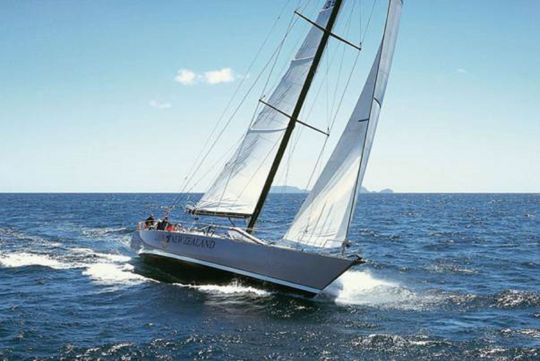
1989 - 1990: the last and the first!
Douglas Myers, the former president of Lion Breweries, decides to continue sailing sponsorship with three new projects, which will be run under the name of Steinlager, his export beer. After a victory in the Round New Zealand Two-Handed Yacht Race in 1988 aboard the trimaran Steinlager 1, it is time to race on its fifth Whitbread.
Due to political unrest in South Africa, the Whitbread route of 1989-1990 was modified to exclude Cape Town. The start is from Southampton (England) to Punta del Este (Uruguay). This will be followed by Fremantle (Australia), Auckland (New Zealand), Punta del Este again, Fort Lauderdale (United States) and back to Southampton. This new route requires a downwind sailboat.
In collaboration with designer Bruce Farr, Blake and his crew decided on a longer boat than ever with larger masts. After discovering that his rivals Fisher & Paykel (F&P) had a very similar design with a ketch rig, the navigator decided at the last minute to opt for a split rig. With this particular architecture, Big Red stands out from the others.
Steinlager 2 crosses the starting line of the 1989-90 Whitbread edition in the lead. Each stage has its share of tragedy: harsh weather conditions, the disappearance of a crew member at sea or even rigging problems. But despite all these challenges, Big Red came first in each stage and won the race.

Don Robertson

 /
/ 